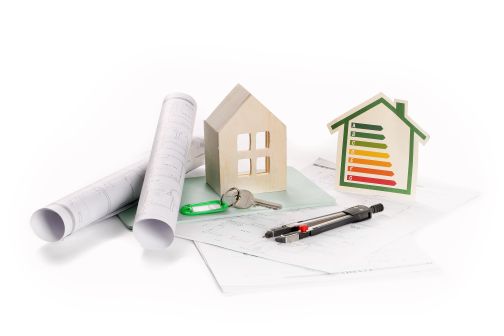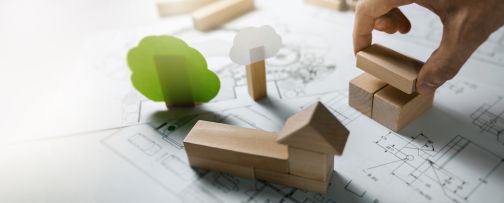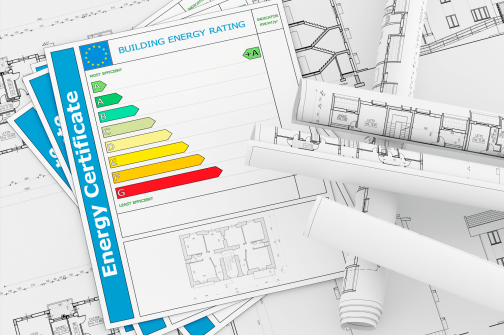Decarbonising heat and what lessons have been learnt?

To make the transition for the industry as smooth as possible, we could learn lessons from past legislation and from our European counterparts. Can we ensure developers meet the conditions for successfully implementing new technologies? How can previous experiences with low carbon solutions inform effective long-term energy strategy for our buildings? How do we ensure the industry efforts align UK-wide and have a positive impact nationally?
Can past UK legislation help inform current low carbon policies?
In the short-term the industry focus has often been on interim solutions with immediate gains. This approach may narrow the options to futureproof properties and get the industry ready for the eventual switch to low carbon technology. Although the tightening of regulations planned for 2017 was delayed, the publication of the updated Part L and Part F set for later in 2021, with an enforcement date of 2022, will no doubt incite much needed change. It may also offer a realistic trajectory to eventual zero carbon housing.
The vacuum around legislation paused the momentum of low carbon delivery in new developments. It may also have cost us years’ worth of new developments that could require retrofit in the future. The delay has left the industry with a shorter time frame for the transition. However, once the goalposts are firmly set, the industry will be able to set out viable strategies and accelerate the implementation of low carbon solutions. Developers would benefit from being equipped with a variety of low carbon solutions and the support to deliver primary energy targets in their buildings today. Net-zero targets could be achieved faster if we could look to the future in our specification and avoid any potential recurring needs to retrofit.
To support a smooth transition, adequate infrastructure to facilitate the electrification of heat will be required. This includes provisions that would help increase the grid capacity but maintain stable connections. Increased specification of existing flexible energy storage technology, such as the Quantum High Heat Retention Storage Heater, is crucial here. Building up the energy reserves in homes could reduce any extra grid capacity required. By allowing greater flexibility to the grid, we could specify more low carbon technologies and the end user would benefit from a far more efficient heating solution.
What are the lessons we could learn from European countries with successful low carbon heat strategies?
There is a gap between the UK market and parts of Europe which are much further ahead in their net-zero transition. The positives taken from the successes of our comparator’s approaches could help us to speed up and smooth out our own journey to net-zero.
For example, Denmark banned the installation of oil and gas boilers in new buildings in 2013. This was followed by a ban of both technologies in existing dwellings if alternatives were available. With the additional boost of €5.6 million support from the government, Denmark began removing the fossil fuel-based energy structure early and is now on target to cut 70% of its emissions by 2030. Meanwhile in Germany, the country’s heat pump subsidy scheme for using renewables and the application of flexible energy storage has proven the feasibility of continued investments.
These European examples show that decisive action and long-term target setting can create the stability that attracts long term market investments and supports industry growth.

Could existing technologies speed up the decarbonisation of heat in UK housing developments?
The Future Homes Standard is a clear sign that our net-zero ambition will soon be reflected in law, a signal to the industry that change will happen. As the first step toward it, all new homes are expected from 2021 to produce 31% lower carbon emissions as part of the interim uplift in Part L standards. There are calls to go further.
The capability of the industry can be improved in a trajectory that reflects bolder ambitions. This approach can already be seen in Scotland which has energy efficiency standards higher than the rest of the UK. The transition to low carbon heating can be accelerated as support is given to all low carbon and complementary technologies that provide the best solution for each project.
Ambient loops, like the Zeroth Energy System, based on in-apartment water-to-water heat pumps connected to an ambient loop, has been designed by Dimplex through close collaboration with industry leading developers. The Zeroth Energy System delivers low carbon heating, hot water, and comfort cooling, where specified, whilst the energy efficiency when modelled in SAP2012 with a commercial air source heat pump, is over 300%.
Innovative systems such as the Zeroth Energy System address specific challenges of modern construction, such as changing compliance and overheating. They also provide designers with greater design freedom to deliver larger and healthier living spaces. With achievable and technology agnostic targets, the low carbon technology innovation can be encouraged further.
Can hybrid technology help resolve the challenge of decarbonisation of heat in existing residential buildings?
Decarbonisation of heat in existing buildings is a complex area. The decision process for technology implementation is driven by different factors in social housing, private development and amongst owners and occupiers. To achieve a balance that is plausible for all sectors, it is vital that the type of tenure is carefully considered. This secures the right amount of funding and provides security for all stakeholders without impacting on the implementation of low carbon solutions.
To advance in this area, the industry needs to seek a change in public perception of low carbon technologies and dispel the assumptions about fuels that are often wrong. If electric cars are seen as a symbol of a clean, low carbon future, then why isn’t the same status afforded to electric heat?
Various hybrid technologies designed for the challenges of retrofit are already available. Information campaigns that include all low carbon technologies could lead to a better understanding of their benefits and wider specification. Modern, energy efficient hybrid solutions go beyond the heat pump and gas boiler combination we are all familiar with. Instead, they incorporate more than one technology to deliver low carbon hot water and heat.
An example of a highly effective hybrid solution is the utilisation of the Edel Hot Water Heat Pump to deliver hot water. Hot water is the highest energy demand service in a modern, thermally efficient buildings. This allows for full flexibility in the specification of space heating options, whether it is a new development or a retrofit. A fully electrified, low carbon solution that makes the most of the Edel Hot Water Heat Pump could incorporate direct-acting panel heaters for space heating and high heat retention storage heating.
A wider application of low carbon hybrid solutions and complementary technologies that do not require specialist installation, could help to close the industry skills gap and accelerate low carbon technology roll out. A greater number of existing buildings could benefit from energy efficient, low carbon technology at significantly lower installation costs, leaving more funding available for the industry-supported ‘fabric first’ approach to refurbishment of properties for decarbonisation.

How do heat decarbonisation strategies align with responses from the construction industry?
A variety of energy strategies are being considered across the UK and Europe with the overall aim of electrifying heat. Many European countries are already implementing bold decarbonisation and electrification policies with financial backing to ensure they reach ambitious environmental goals. Whilst the UK is currently a step behind, our 2050 net carbon target is in line with the European efforts and some environmental goals are comparably greater.
This means that we have some ground to cover; however developers, architects and specifiers have already shown agility and adaptability as our compliance targets rapidly change. Time, flexibility, and ongoing collaboration with forward thinking manufacturers, such as GDHV, will give us the right tools to rise to the challenge.
To discuss low carbon strategies for your new project or to see how innovative solutions such as the Zeroth Energy System or the Edel Hot Water Heat Pump can help to futureproof your project, contact our team of HVAC specialists.








